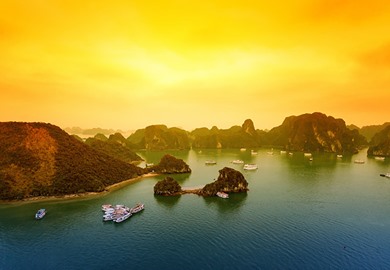Unification Palace
The former presidential palace played a significant role during
the Vietnam War and has been preserved as it was in 1966.
The Museum of History
The museum first opened in 1929 and has a unique and varied
collection of artefacts from 2,000 years of recorded history in
Vietnam. Among the many celebrated items is a statue of the Buddha
that has 1,000 eyes and 1,000 arms.
Emperor Jade Pagoda
The city has a rich collection of beautiful temples, the most
celebrated of which is the Emperor Jade Pagoda. The lavishly
decorated temple is designed with influences from southern Chinese
architecture.
Cho Lon
Ho Chi Minh's Chinatown district is located on the far side of
the Saigon River, away from the main part of the city. It is the
oldest part of the city, with a particularly mysterious feel. It is
also where you are likely to get a true glimpse of 'normal' life in
Ho Chi Minh, particularly at the Binh Tay Market, which is busy
throughout the day and can be quite manic in the morning.
Cu Chi Tunnels
The famous Cu Chi Tunnels are an underground network, heavily
used by the Viet Kong army during their war with the USA. At their
peak, the dense network of tunnels covered an amazing 155 miles
(249 kilometres) in the Cu Chi area alone, and at their very
longest the tunnels stretched from the outskirts of Saigon to the
Cambodian border.
Parts of the complex were several storeys deep, filled with
trapdoors and living areas. The conditions in the tunnels were
never ideal, but at times they verged on appalling; sickness was
rampant in certain sections of the tunnels on many occasions. Yet
their importance in helping the Viet Kong avoid detection, win the
war, and achieve reunification cannot be overestimated; and as such
they are today revered by many of the Vietnamese people. The
tunnels have now been enlarged slightly, to make them more easily
accessible for the many visitors who come to what is almost a place
of pilgrimage today.

















